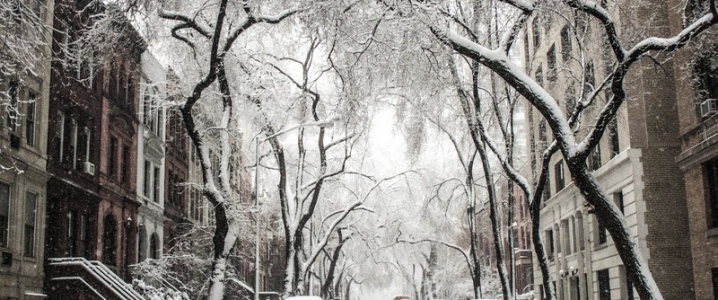The longest period of extreme volatility in the U.S. natural gas market in a decade will likely come to an end at the end of the winter as current forecasts suggest that warmer weather will stay until late in February.
U.S. Henry Hub futures prices began their wild ride in the fall of 2018, following a period of extremely low volatility between February and November that was last seen 1992.
With the polar vortex—a severe but short-lived cold spell—behind us, weather forecasts suggests milder winter at least until the end of this month. As a result, analysts expect the extreme volatility in the U.S. natural gas market to ease as we go into the end of the season.
In mid-November last year, natural gas prices jumped to $4.80 per MMBtu as storage at a 15-year low, an unusually cold fall, production freeze-offs, and high exports from Corpus Christi combined to create a perfect storm that sent U.S. natural gas prices to their highest level since the polar vortex of 2014.
Natural gas prices continued their wild swings in both directions into the New Year, because inventories below the five-year average and seasonal storage draws have made prices highly vulnerable to changes in the short-term weather models and forecasts.
The market and traders reacted to weather models and every forecast of warmer or colder than average temperatures led to extreme market reactions, often in two consecutive trading days.
According to Reuters estimates, the difference between the highest and lowest intraday trading levels for U.S. front-month gas natural gas futures since November 2018 has averaged 8.2 percent from the previous closing price—and this was the most extreme volatility for a longer period of time since 2009, when the spread was 8.7 percent. Related: Kazakhstan’s Oil Dilemma
To compare, between February and November 2018, that difference averaged just 2.4 percent, Reuters estimates show.
The extreme volatility may have benefited a lot of hedge funds and traders, but it also claimed at least one victim after Florida-based commodity trading advisor OptionSellers suffered huge losses with bets gone wrong and collapsed.
Market participants were betting on higher or lower natural gas prices, based on weather forecasts and their perception of future heating demand, rather than on current temperatures. That’s why natural gas prices dropped through last week, despite soaring natural gas use and utilities calling on customers to reduce gas use while the polar vortex had gripped most of the U.S. Midwest with the lowest temperatures in decades.
Even before the polar vortex hit, natural gas stocks for the week ending January 25 were 14 Bcf less than this time last year and 328 Bcf below the five-year average, the latest Energy Information Administration (EIA) data showed last week.
Related: Bank Of America: Oil Demand Growth To Hit Zero Within A Decade
But the very cold spells so far this winter have been very short-lived, and on average, temperatures have been milder than usual. Current forecasts don’t see extreme cold spells going forward and suggest that typical or above-average temperatures will prevail for most of February.
The “lack of any follow up cold weather is providing justification for a further reduction in the remaining Nymex winter contract’s risk premium,” MarketWatch quoted a report by Rich Redash, a researcher at S&P Global Platts focusing on North American gas-and-power, as saying last week.
Based on current weather forecasts for the rest of the winter, analysts expect the extreme volatility in U.S. natural gas market to go away as the winter season comes to an end, although some suggest that this may not be followed by extremely low volatility that had prevailed in the market in the spring, summer, and early fall of 2018.
By Tsvetana Paraskova for Oilprice.com
More Top Reads From Oilprice.com:
- Oil Heads Lower On Small Inventory Build
- China Faces An Uphill Battle For Energy Independence
- Mozambique LNG Increasingly Appealing For International Players


















